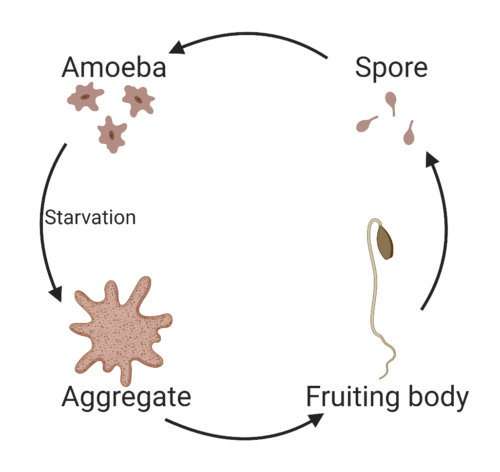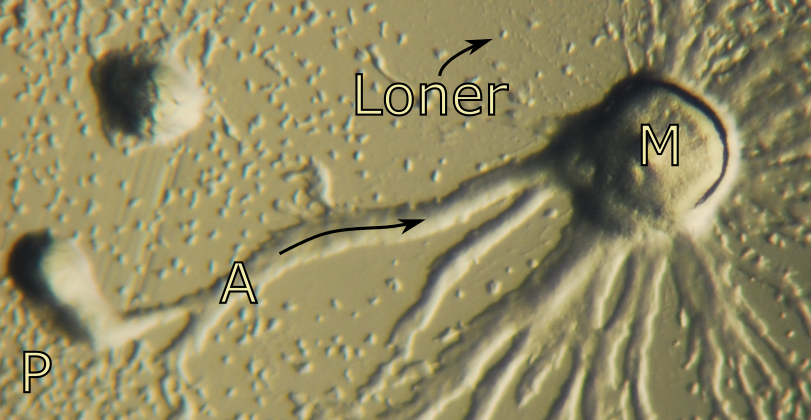Review written by Thiago T. Varella (PSY GS) and Gabriel T. Vercelli (PHY ‘20)
Ever since the spread of SARS-Cov-2 imposed quarantines of global reach, people around the world have voiced their frustrations about social isolation. Indeed, Aristotle said back in 4th century BC, “man is by nature a social animal,” highlighting that our unease towards isolation is at least as ancient as the Classical era. However, as seemingly unnatural as social isolation might be for humans, it plays a crucial role in the current attempts to stave off the pandemic. Interestingly, isolation might serve a similar purpose in the natural world! Individuals that do not engage in collective behaviors have been observed in many social species. This behavioral divergence is usually thought of as an error, a failure to perfectly coordinate all individuals in a population; but this isolation could, at least theoretically be premeditated or shaped by natural selection (Barta, 2016). This leads to the question: are these isolated individuals, also called “loners,” a mere consequence of failed synchronization of the group, or could they be a mechanism nature developed to mitigate the risks of collective action?
Rossine and Martinez-Garcia, from Princeton’s Department of Ecology and Evolutionary biology, and colleagues managed to answer this question by studying slime molds, specifically the amoeba Dictyostelium discoideum. Slime molds are impressive beings. They can live freely but also come together to form multicellular organisms. Specifically, D. discoideum aggregates when resources are scarce by signaling to each other that it is time to aggregate and generate spores (Fig. 1). These spores then serve as a spreading mechanism to move the organism to habitats that can better sustain the cells. In the case of D. discoideum, “loners” are those that do not follow the group, failing to aggregate. Rossine, Martinez-Garcia and colleagues show that this loner behavior is heritable and that it can benefit the group in case food is replenished.

In their most recent paper, the authors used both experiments and modelling to understand the eco-evolutionary significance of these “loners.” In their first experiment, they noted that as the initial density of D. discoideum cells increases, the number of loners left behind in aggregation trends towards a constant level. This constant was strain-specific, so it could be seen as a phenotype of this species. This finding hints that loner density is a heritable trait and, therefore, can be shaped by natural selection. Moreover, the authors developed a mathematical model to describe the decision-making process controlling these amoebae’s life cycle transitions (Fig. 1). They simulated a population of starving cells, all starting in a pre-aggregating state (P). Cells in that state do not move and just signal their presence to their neighbors. This signaling is mediated by an extracellular molecule that diffuses in the environment. Once this signal reaches a concentration threshold, it allows the cells to transition to an aggregating state (A). Cells in that state continue to signal their presence but start moving towards the aggregation center (a point in space specified a priori). Once they reach the center, they become multicellular (M) and stop moving and emitting signals. There were four relevant parameters in this process: the diffusion coefficient of the chemical in the environment, the sensitivity threshold of the cells to signal, the probability of the transition from P to A, and the velocity of the cells when going to the aggregation center (Fig. 2).

By simulating the model with different combinations of parameters, Rossine, Martinez-Garcia, et al. were able to recapitulate the constant loner density at high initial concentrations of cells. Moreover, they could give biological significance to their parameters by understanding which conditions favored aggregation (low sensitivity threshold to the signal, high transition rate between P and A states, low cell velocity, high diffusivity of the chemical) and which favored production of loners (opposite traits). They then tested these predictions by preparing cell cultures of different strains in different environments, such as agar plates with decreasing agar contents and agar plates with a thin water film on top of the solid surface. The decrease in agar content increases the porosity of the media, while the water film changes the viscosity – both increasing the diffusivity of the signaling molecule. The results of these experiments were in complete agreement with the predictions of the model, showing a reduced number of loners in conditions with higher diffusivity of the signaling molecule for all strains tested.
Nevertheless, in nature, the strains are rarely alone. When the research team analyzed two different strains of D. discoideum in a competing environment, they observed that the resulting loner density was not a mere linear combination of the two individual loner densities.. That nonlinearity suggests that there is a complex interaction occurring between the two populations. After establishing the applicability of the model, they used it to further predict what would happen from this interaction during periodic cycles of food replenishment. Two developmental pathways were simulated. In the first, the strains were allowed to interact and coaggregate, generating multicellular bodies that contain both strains of amoebae. In the second, they were not allowed to interact and, instead, developed independently from each other. The non-interacting pathway was used as a control to study the difference in loner density in the interacting pathway. When the strains interacted, the difference in density could either decrease, making them more similar (convergence), or increase, making them more distinct (divergence). One important prediction of the model when considering these pathways was that the performance of each strain depends on the duration of the starvation period. More specifically, strains that were better aggregators were more adapted than worse aggregators to environments with long starvation periods while worse aggregators were more adapted to environments with short starvation periods. This result was consistent with the intuition that worse aggregators bet that there will be food again in their own environment, while better aggregators bet that they are going to find better conditions in a different environment.
Rossine, Martinez-Garcia, et al.’s results show that loner behavior depends on genetic traits of specific strains, and that different traits have different levels of adaptation to different environments. This research serves as an important argument against the notion that collective behavior evolved as the best strategy to maintain survival in any condition. Instead, collective behavior is one strategy that might coexist with other complementing strategies (i.e., loners). In a broader sense, the coexistence of reproductive strategies makes species better adapted to specific environments.
Fernando Rossine, a graduate student in the Tarnita Lab and co-first author, emphasized what follows from Aristotle’s quotation: “Man is by nature a social animal. An individual who is unsocial naturally and not accidentally is either beneath our notice or more than human.” He explained further, “the naturally un-social individuals have been beneath the notice of science for long enough!"
This original paper was published by PLOS Biology on March 19, 2020. Please follow this link to view the full version.
References:
Barta, Z. (2016) Individual variation behind the evolution of cooperation. Philos Trans R Soc Lond B Biol Sci. 2016 Feb 5; 371(1687): 20150087. doi: 10.1098/rstb.2015.0087
